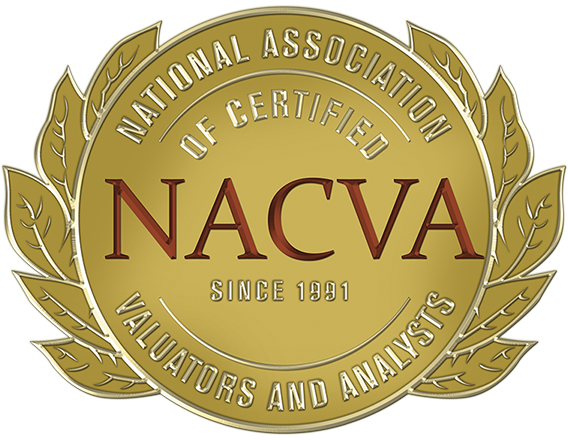
Frank Wisehart is a Director at Berkeley Research Group (BRG) with over 25 years of experience in business valuation and forensic accounting. Based in the San Francisco Bay Area, Frank is a certified valuation expert and frequently serves as an expert witness in litigation. He leads a team of 20 certified valuation experts within a firm of 1,400 professionals. Frank’s team’s workload is split, with 60% dedicated to business valuations and 40% to lost profits calculations, primarily for expert witness engagements on a national and global scale. In this case study, Frank shares his insights on how he and his team use Kroll’s cost of capital data to support and defend his team in their cost of capital assumptions and valuation analysis.
The Problem
Frank and his team had to determine accurate cost of capital estimates, which are essential for forming defensible conclusions in court. In the complex and high-stakes environment of litigation, relying on outdated or incomplete data could lead to erroneous conclusions, potentially weakening their case or leaving their analysis vulnerable to cross-examination. The team needed a reliable, centralized source of data and resources.
The challenge lay not only in accessing the right data but also in correctly interpreting and applying it to their specific case needs, ensuring the highest level of accuracy and defensibility in their litigation work. “Best practice is having the perfect combination of expert opinion coupled with data, which means I can calculate value with precision,” says Frank. “An expert’s opinion can be called into question or debated but data speaks for itself.”
The Solution
For Frank, Kroll has always been the gold standard for cost of capital data. He utilizes Kroll’s U.S. Cost of Capital data extensively to determine size risk premiums and other risk factors employed when arriving at a cost of capital estimates. Kroll Cost of Capital Data is a key ingredient to develop the buildup methods to estimate cost of equity.
“Whether conducting a sophisticated lost profits analysis with year-over-year sensitivity or performing a going concern valuation, Kroll provides all the necessary data points for precise calculations,” says Frank. “We delve into the different CRSP deciles, utilizing them uniquely to calculate the size premium and other factors essential in the buildup methodology for assessing risk.
Frank emphasizes the versatility of Kroll’s data, highlighting its applicability across various valuation scenarios. From beginners needing straightforward, reliable data and tools, to advanced users conducting complex analyses, Kroll’s comprehensive data sets meet a wide range of needs.
Application of Kroll Data
Frank’s team uses Kroll data for a variety of sophisticated analysis in the following applications:
1. Going Concern Valuation Using a Discounted Cash Flow Model: By using supply-side historical equity risk premium data from Kroll, Frank builds Going Concern Discounted Cash flow models. This data is crucial to assess the risk associated with discounting cash flows to their present value to arrive at the value of a business.
Since it’s impossible to take a one-size-first-all-approach, the Kroll Navigator provides extensive resources on the methodology used to arrive at the data points which enables valuators to get familiar with the theoretical concepts and enrich their decision-making by being aware of how those methodologies are derived, and in which circumstances they are better used.
2. Lost Profits Analysis: Frank utilizes historical equity risk premium data from Kroll to calculate lost profits over different periods (maturities), enabling precise and compelling financial arguments in litigation. The ability to use one-year, two-year, and longer-term rates of return allows for tailored analyses that enhance the credibility of his findings. (Further explained below)
3. Industry Data: Kroll’s industry data helps Frank determine debt versus equity ratios and apply industry risk premiums, enhancing the accuracy of his valuations. This data is vital for benchmarking and ensuring that valuations reflect industry standards and best practices.
New Equity Risk Premium Data Based on Different Maturities
Kroll recently introduced a new data set for equity risk premiums by different maturities, which Frank has found invaluable. “This new data allows us to build more nuanced models, particularly for lost profits. It increases our credibility by providing data-driven answers,” Frank explains. He goes on to add that: “The historical data spanning from 1926, is now available for different maturities, adds a layer of precision to my analyses, making my valuations even more robust.”
Frank particularly appreciates how Kroll’s continuous improvements align with the evolving needs of the valuation profession. The introduction of these new data sets not only enhances the quality of his work but also provides him with new tools to explore different valuation scenarios and methodologies.
Integration with ValuSource Software
Frank’s team downloads Kroll data and integrates it into their customized Excel spreadsheets and BVM Pro software. “We use BVM Pro software to calculate our discounts, and the integration with Kroll’s data ensures that our calculations are both thorough and detailed,” says Frank.
This seamless integration not only streamlines the valuation process but also enhances the reliability of the results. By combining Kroll’s data with ValuSource’s powerful software tools, Frank’s team can produce high-quality valuations that meet the rigorous standards expected in their field.
Conclusion
Frank Wisehart trusts Kroll data to be comprehensive and reliable, allowing him to perform sophisticated cost of capital analysis. His extensive use of Kroll data underscores its importance in producing reliable and sophisticated cost of capital estimates. In Frank’s opinion Kroll provides the tools and data needed by practitioners to enhance the quality and credibility of their valuation work. Frank believes that Kroll’s data provides a foundation that allows valuators to present cost of capital estimates rooted in empirical evidence rather than subjective judgments.
About Frank Wisehart
Frank Wisehart is a seasoned expert witness who has more than twenty-five years of testifying experience and has made more than one hundred appearances at depositions and trial.
His expertise includes business valuation, white collar civil/criminal, family law, lost profits, alter ego, money laundering, and general commercial litigation financial issues. Mr. Wisehart is a Certified Public Accountant, Certified Fraud Examiner, Accredited in Business Valuation professional, and Master Analyst in Financial Forensics.
In addition to his investigative experience, Mr. Wisehart spent more than ten years as a controller and chief financial officer in the real estate development, construction and management, advertising, and information technology industries.
Mr. Wisehart earned MBAs from Cornell University and Queen’s University. He is a National Association of Certified Valuators and Analysts (NACVA) instructor with distinction and won NACVA’s Circle of Light instructor award in 2013. He has served on NACVA’s Valuation Credentialing Board, Litigation Forensics Board, and Standards Board and the American Institute of Certified Public Accountants’ Technical Standards Subcommittee regarding Generally Accepted Accounting Standards.
